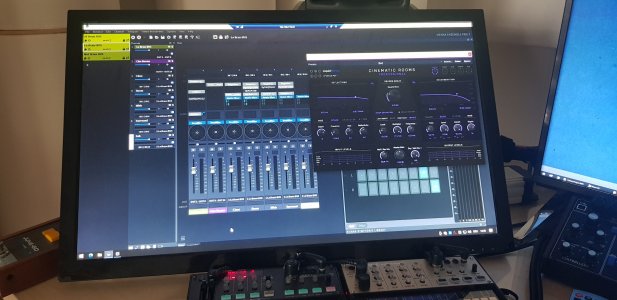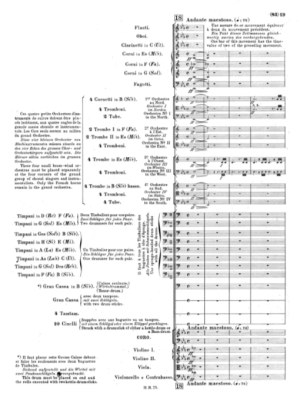This for example is my VePro Brass rig. Not so much processing going on here. But every stem has it's own Cinematic Room or Exponential Audio. My goal was being able to hear a near finished mix while composing. My main DAW is able to play back a whole composition of several minutes with lots of instruments (200+) that have expression mapped articulations in it. What my computer isn't able to do, is handling all the mixed stems. So Junkie XL gave me that idea and I took it little bit further and offload all the processing in VePro computers. (I think that many composers that work in stereo don't have that problem.)
It takes a bunch of computers for some processing. And here I wouldn't recommend by going with just one 3950x as a VePro slave to handle all your orchestra. The problem is network latency. Don't get fooled by the picture below ip address shown on the upper taskbar. This is just the communication port for the onboard lan card to work with remote desktop. VePro has it's own dedicated 10G network. And although I connected every computer via 10G, I limited the incoming channels to 1G. But that's another story I'm happy to share my trail and errors to. So, as you can see, surround sucks up lot of CPU. You can try staying itb by using lot of dsp cards. But you will limit yourself to a system that will run out of CPU the sooner or later. And then you will have the problem that all your pci slots are occupied. Of course you can rebuild the whole setup. And later on put the UAD cards into a different computer. Give it a little thought first. These uad system are very expensive compared to a slave computer with some nice surround plugins. I also tried a system with used rme cards (bought on ebay) in each slave. Boy that was still expensive and great and lo latency. Unfortunately I ran out of outputs, hahaaaaa. So that was a shoot in my own foot.
PM me if you got further questions about this and that. I'm happy to help out.
It takes a bunch of computers for some processing. And here I wouldn't recommend by going with just one 3950x as a VePro slave to handle all your orchestra. The problem is network latency. Don't get fooled by the picture below ip address shown on the upper taskbar. This is just the communication port for the onboard lan card to work with remote desktop. VePro has it's own dedicated 10G network. And although I connected every computer via 10G, I limited the incoming channels to 1G. But that's another story I'm happy to share my trail and errors to. So, as you can see, surround sucks up lot of CPU. You can try staying itb by using lot of dsp cards. But you will limit yourself to a system that will run out of CPU the sooner or later. And then you will have the problem that all your pci slots are occupied. Of course you can rebuild the whole setup. And later on put the UAD cards into a different computer. Give it a little thought first. These uad system are very expensive compared to a slave computer with some nice surround plugins. I also tried a system with used rme cards (bought on ebay) in each slave. Boy that was still expensive and great and lo latency. Unfortunately I ran out of outputs, hahaaaaa. So that was a shoot in my own foot.
PM me if you got further questions about this and that. I'm happy to help out.





 Thanks a lot for sharing!
Thanks a lot for sharing!

